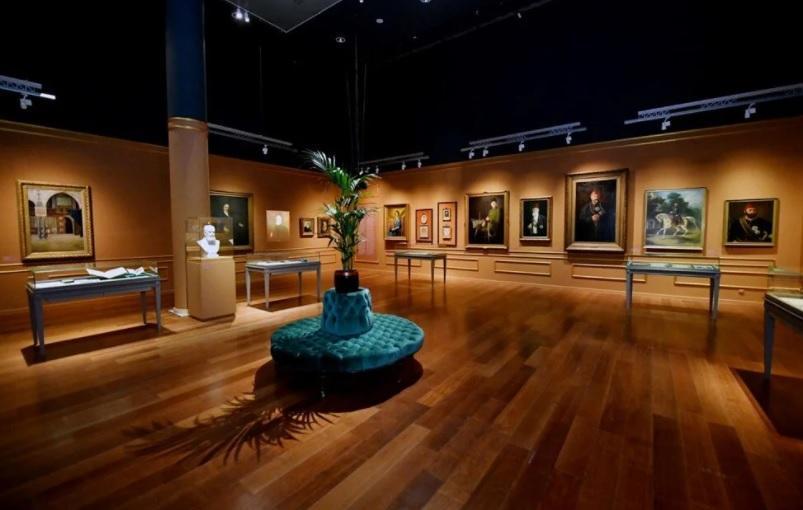
Sabancı University’s Sakıp Sabancı Museum (SSM) is hosting “The Prince’s Extraordinary World: Abdülmecid Efendi” exhibition on the life and art of Abdülmecid Efendi, the last caliph of Ottoman Empire who had a lasting effect on Turkish art history.
Apart from his patronage to many artists and institutions, he was an accomplished painter who was also interested in calligraphy, music and literature.
“The Prince’s Extraordinary World: Abdülmecid Efendi” comprises artworks from SSM’s collection, 14 official institution collections, 17 family collections, private museum and gallery collections, together with the works that arrived from France, where the caliph spent his last 20 years, with the support and cooperation of the Institut Français Turkey and the French Consulate in Istanbul.
The exhibition collection consists of 60 paintings and more than 300 documents, along with a self-portrait dated 1926 from the Musée Massena Collection in Nice and two original framed paintings taken from the Pierre Loti Museum House in Rochefort and gifted to Loti by Efendi.
Offering a comprehensive perspective on Efendi’s art, the “Abdülmecid Efendi Beyond Vision” section presents the SSM collection’s six Efendi paintings, which were, for the first time ever, subject to a scientific research study.
The study carried out in collaboration with Sabancı University, Koç University and Istanbul University’s Faculty of Forestry, illuminates Efendi’s painting technique, the restoration in his works, including the structure, color, paint layers and texture of the materials he used and his artistic production conditions.
Describing the life of Efendi, Nazan Ölçer, the director of SSM, said: “Abdülmecid Efendi spent about 50 years of his life as a prince, four years as a crown prince, about 16 months as a caliph and the last 20 years in exile. In his 76 years of life, he witnessed three regimes - absolute monarchy, constitutional monarchy and the republic - and endured two world wars.”
“Along with his painter identity, he was interested in music and calligraphy. With his support to the intellectuals and artists, with whom he maintained close friendships, he was extraordinary for the Ottoman dynasty ever since his princedom. Conscious of the spirit of his time and the tensions between East-West and tradition-modernity, he lived his life as an Ottoman intellectual who was open to the West while staying true to his religion and tradition,” Ölçer stated.
“In our exhibition, we will look at the prince’s relationship with literature and music, as well as his close friendship with the intellectuals and artists of the period, along with his paintings,” she added.
Stating that the visitors will see his three Fog paintings side by side, inspired by Tevfik Fikret’s poem, Ölçer said the museum explores Efendi with more than 300 documents, including the landscape paintings he gifted to his close friend Pierre Loti, his letters, family photos, some of which remained unknown, and many menus, including the invitation card given by his close friend Abdülhak Hamit for the premiere of his play, Finten.
The visitors of the exhibition are accompanied by musical compositions by his father, Sultan Abdülaziz, who also established the first comprehensive painting collection of the palace.
The exhibition will run through May 1, 2022.